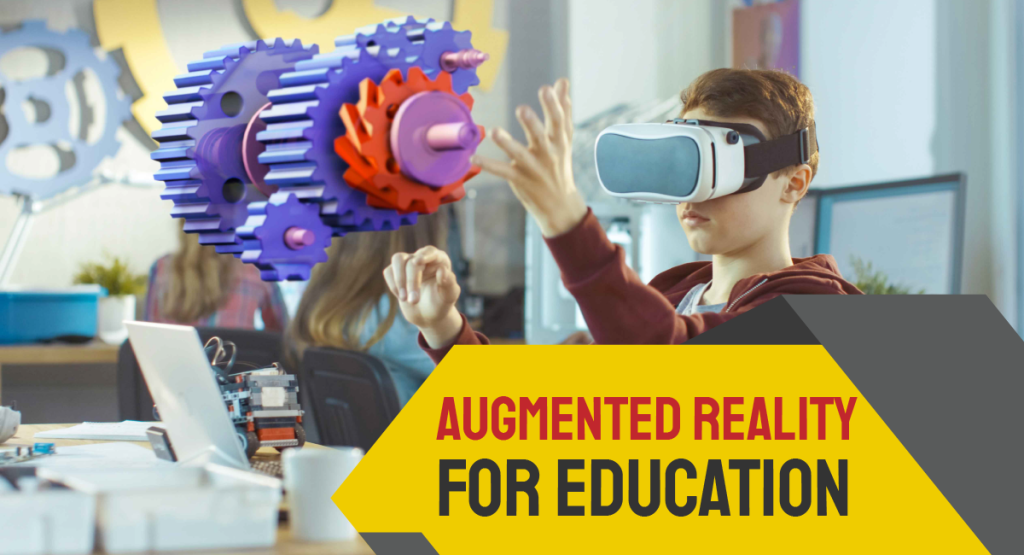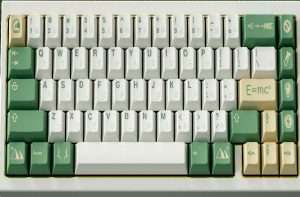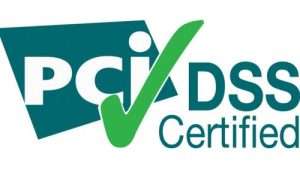Augmented Reality in Education – Application and Advantages

The traditional method of teaching is long gone. New methods of teaching are being experimented with the help of technology.
These methods have proven to be more interactive for the students, creating the big differences between the old education teaching and learning method and the modern style.
For example in the traditional method, the students learn under the instruction of the teacher, they also learn through memorization and recitation.
But now, motion pictures are used, education software can be given to students while they learn at their comfort time.
Since the present generation is inclined towards technology, the combination of education with technology has made learning more engaging for the students.
There are several apps in the field of education presently which have proved to be successful among the student community.
The next step here is the use of augmented reality.
How Augmented Reality helps school education?
Augmented reality (AR) is now very relevant in the education sector, especially its application in higher education learning and training institutes since it makes teaching and learning to be simplified.
AR can be used in the classroom setup where the otherwise used traditional method can be altered with this.
For example, when AR is used in the study materials, whether it is the textbooks or apps, the learning process becomes engaging.
This innovative method can also be used to make the tough subjects and tedious concepts simplified and entertaining and that makes the future of AR application in education to be given much priority.
Already, statistics have shown an uptrend in its application and we hope to see more adoption of AR in years to come.
As of now, AR is presently used in simple formats which have proven to be effective among students.
By showing the AR app in front of a concept, the concept will come live in front of the students’ eyes and it will explain itself.
In the case of science, just like a Facebook profile, there are also cards and profiles for various species.
Since the present generation of students has a short attention span due to the various distractions around, the use of AR in the classroom will get the students hooked to the subject.
These and many more are some of the reasons augmented reality should be considered in every tie of education.
Although there may be some challenges like software issues, rejection, limitation to hardware capabilities, the pros still outweigh the cons.
The learning process can be made interactive with visual stimulation with the help of AR.
Apart from this, an AR-based artificial world can also be created for each student or class, where explorations can be made related to the subject.
Teachers can design such quests and encourage students to learn through the experience.
While the present applications of AR in schools are just in the beginning stage, it is expected to transform the method of teaching and learning soon.
Augmented Reality helps in self-learning
While part of the learning happens in a classroom, the rest happens at home.
This includes the tasks assigned to the students as homework and the leisure learning done by the students.
Since teachers will not be present at home to assist the students, AR can take their place and guide the students in learning the concepts and in finishing the assigned tasks.
By assigning self-learning tasks that work on AR, students will be eager to explore the content.
It will also encourage students to spend quality time learning at home.
At present, some materials are AR-based that are used in several educational institutes.
More such materials are expected to take over the routine homework tasks.
By making the images and the visuals project out in a 3D fashion, it will make the learning materials lively.
When students perform the tasks at home, these visuals can be altered in a way to concentrate on the important tasks which otherwise would be missed.
Since students are hooked to mobile phones in their leisure time, combing AR and mobile for learning purposes is sure to get their attention.
Augmented Reality in Research
Students conduct several types of research in schools and colleges based on their academic level.
From basic science projects to in-depth studies, many kinds of research are carried out in academic institutions.
By bringing augmented reality into the lab atmosphere, these experiments and research can be made fun.
The concepts can be brought to reality in experiments with augmented reality.
Since several science experiments have their dangerous limits and hazards attached to them, AR can be used in that space to eliminate all the risks in real-life experiments.
In the case of electronics and chemistry experiments, the high voltage circuits and the mixing of certain chemicals which have a major reaction are all unsafe.
While the procedure and the results of the experiment and research will be the same, the safety issues can be removed by implementing AR.
When AR is brought into the lab, the interest for students in doing the research or in experimenting with a concept will grow drastically.
This is currently witnessed in academic institutions where AR-based educational tools are in place.
When resources for certain studies and research are unavailable or extinct, Augmented Reality can be used to substitute the live resources to successfully perform the study.
By engaging AR in their daily lives, students will start learning at their own pace.
This will also pave way for personalized or customized learning for every student.
Through this method, the particular concepts in which the student is lacking can be addressed individually.
Personalized review with AR can also help with the growth of the student’s learning.
In the end, the whole process of learning and teaching will be simplified for both the students and the teachers.





